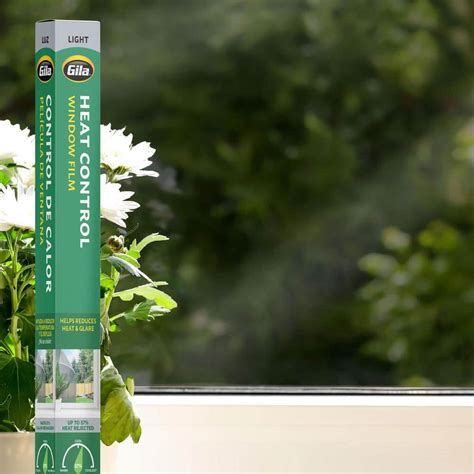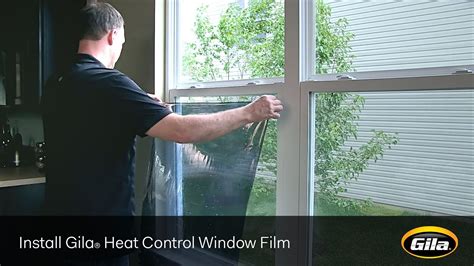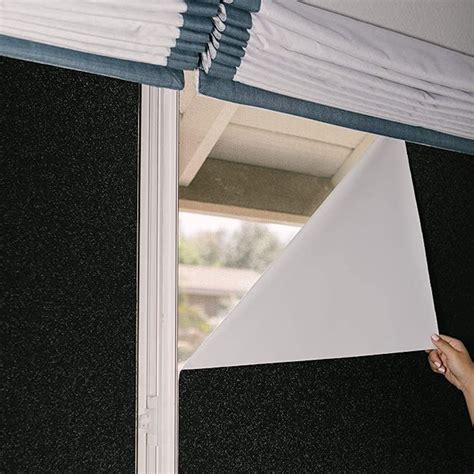Heat control window film has become an essential component in modern architecture, offering a unique blend of functionality, energy efficiency, and aesthetic appeal. As the world grapples with the challenges of climate change, reducing energy consumption and minimizing the carbon footprint of buildings has become a pressing concern. Window films, in this context, play a pivotal role in regulating the amount of heat that enters or leaves a building, thereby contributing to a more sustainable and energy-efficient environment. In this article, we will delve into the world of heat control window films, exploring their benefits, functionalities, and the technology behind their operation.
Key Points
- Heat control window films can reduce heat gain by up to 80%, significantly lowering cooling costs.
- These films can block up to 99% of UV radiation, protecting furnishings and occupants from harmful ultraviolet light.
- Heat control window films are available in a variety of shades and tints, allowing for customization to meet specific needs and preferences.
- The installation of heat control window films is a relatively non-invasive process, making them a viable option for existing buildings.
- These films can also enhance the safety and security of a building by holding shattered glass in place in the event of breakage.
Understanding Heat Control Window Films

Heat control window films are designed to manage the flow of heat through windows, minimizing the amount of heat that enters a building during the summer months and reducing heat loss during the winter. This is achieved through the use of specialized materials and coatings that reflect or absorb solar radiation. The films are typically applied to the interior surface of the window glass, where they can effectively block or filter the sun’s rays.
Types of Heat Control Window Films
There are several types of heat control window films available, each with its unique characteristics and benefits. These include low-e (low emissivity) films, solar control films, and security films. Low-e films are designed to reduce heat transfer between the interior and exterior of a building, keeping the building warm in the winter and cool in the summer. Solar control films, on the other hand, are specifically designed to block or filter solar radiation, reducing heat gain and preventing fading of furnishings. Security films are designed to hold shattered glass in place, enhancing the safety and security of a building.
| Film Type | Description | Benefits |
|---|---|---|
| Low-e Films | Reduce heat transfer between interior and exterior | Energy efficiency, reduced heat loss/gain |
| Solar Control Films | Block or filter solar radiation | Reduced heat gain, prevention of fading |
| Security Films | Hold shattered glass in place | Enhanced safety and security |

Benefits of Heat Control Window Films

The benefits of heat control window films are numerous and well-documented. By reducing heat gain during the summer and minimizing heat loss during the winter, these films can significantly lower energy consumption and reduce the strain on heating and cooling systems. This, in turn, can lead to substantial cost savings and a reduction in the building’s carbon footprint. Additionally, heat control window films can block up to 99% of UV radiation, protecting occupants and furnishings from the harmful effects of ultraviolet light.
Energy Efficiency and Cost Savings
One of the most significant benefits of heat control window films is their potential to reduce energy consumption and lower energy costs. By minimizing heat gain and loss, these films can reduce the need for air conditioning and heating, leading to substantial cost savings. According to the International Window Film Association, heat control window films can reduce energy consumption by up to 30%, resulting in significant cost savings and a reduction in the building’s carbon footprint.
How do heat control window films work?
+Heat control window films work by reflecting or absorbing solar radiation, minimizing the amount of heat that enters or leaves a building. They are typically applied to the interior surface of the window glass, where they can effectively block or filter the sun's rays.
What are the benefits of heat control window films?
+The benefits of heat control window films include reduced energy consumption, lower energy costs, protection from UV radiation, and enhanced safety and security. They can also improve the overall comfort and aesthetic appeal of a building.
How are heat control window films installed?
+Heat control window films are typically installed by a professional, who will clean and prepare the window surface before applying the film. The installation process is relatively non-invasive and can be completed quickly, with minimal disruption to building occupants.
In conclusion, heat control window films offer a unique blend of functionality, energy efficiency, and aesthetic appeal, making them an essential component in modern architecture. By reducing heat gain and loss, blocking UV radiation, and enhancing safety and security, these films can significantly improve the comfort, energy efficiency, and overall value of a building. As the world continues to grapple with the challenges of climate change, heat control window films are poised to play an increasingly important role in the pursuit of a more sustainable and energy-efficient future.



